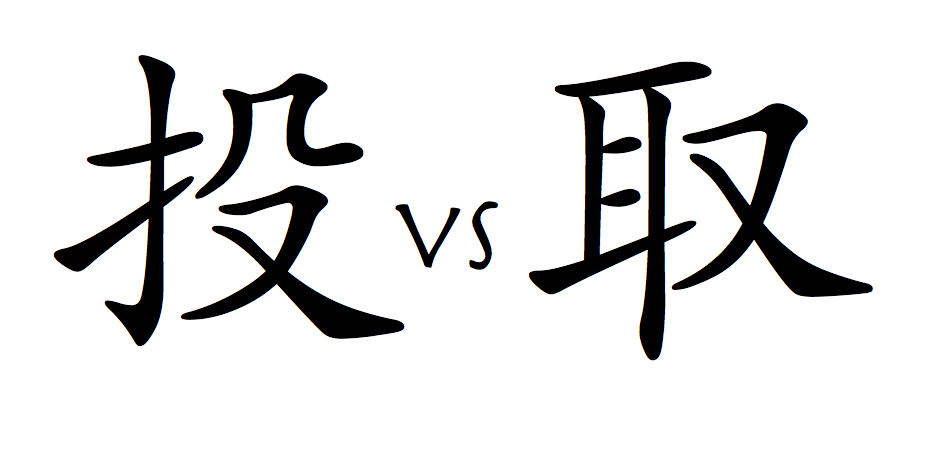
Some teachers use the terms Uke and Nage and some prefer Uke and Tori. Both have different meanings but the different terms remind us of our tendency to focus on throwing our partner. In contrast many of O’sensei’s direct students repeat that “it is not about the throw.” Aikido removes the possibility for an attack while giving an opportunity to “take ukemi”
The Kanji for “nage” on the left is generically translated to “the one who throws.” Looking closer it has the characters for hand, table, and the action of throwing. This is said to depict the action of throwing a spear in such a way that it lands vertical in the ground upon missing the target. This too focuses on the waza (skilled action) versus an end goal. In the context of aikido it is interesting that the result of “nage” is you have thrown away both your and uke’s ability to harm.
The Kanji for “tori” is on the right and it is generically translated to “the one who takes” which is preferred by many teachers because you can focus on taking the center, which is far more important then if uke falls over. Oddly the Kanji includes the characters for ear and the throwing away (same as nage). This translates to take because it depicts the action of taking the head by the ear (as a samurai “takes a head”). Not a pretty picture but it clearly implies taking the center of the person as is essential to the technique.
Saito Sensei speaks in terms of uke and nage. There are many examples where Saito Sensei talks about nage’s responsibility for uke’s safety as part of the technique. For shihonage, which is often too aggressive he says that the technique is “severe” but the throw is soft. “It’s not ukemi practice, it’s aikido practice.”
He continues to say that big throws make for good demonstrations but not good technique. He later shows how concentrating on the throw makes nage unbalanced at the end of the technique. For weapons taking he says not to direct the throw uke into the ground because it will risk injury. All of these comments are followed by uke flying through air across the mat only to pop back up ready for the next move. In the end you say, I say, what I find most useful is to align practice, your personal objectives, and the “do” or way you represent.

I find that as a beginner in Aikido over excitement can lead to big throws. Many of the techniques learned in the beginning seems to flow naturally. by this i mean that if done correctly the person being thrown the movements up until the throw should be the same as that is how there arm bends as an example. this way it seems that once you are at the throw all you have to do it apply a little pressure and they will throw themselves. well not really but the big throw is unnecessary and can lead to injuries as this video articulates.
I also find there is a particular passiveness to some beginners. My own opinion is that you should not give the throw for free, but instead let them work for it. I am not saying fight them but if they do not put some effort into it and the technique is not done with enough force do not fall just because that is the way of things. let them fail as this is the best teacher. It is your responsibly as the person falling or being thrown to help someone using Aikido by allowing the technique to be done properly and to that end you are assisting in the lesson as the opponent.